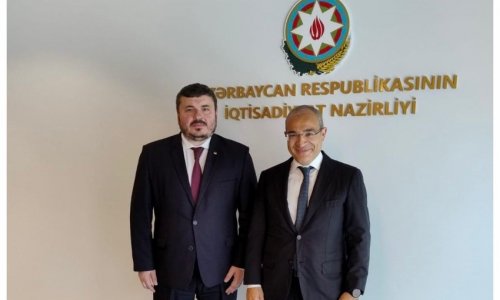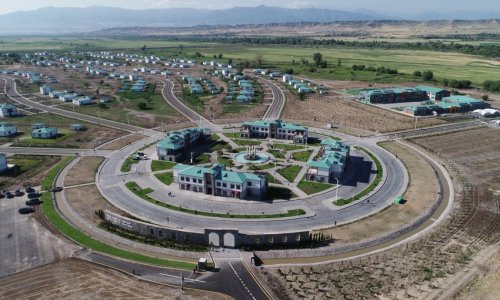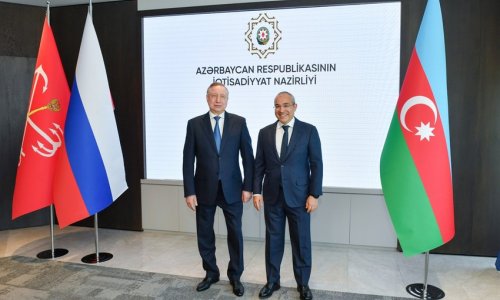(EconomistIntelligence Unit) -- POLITICAL STABILITY: Ilham Aliyev, who has been in officesince 2003, won a third term as president in October 2013 and is expected toretain a strong grip on power throughout the forecast period. The government iswilling to suppress popular protest by force if necessary and has recentlyimposed further limits on the media. The opposition does not yet pose a risk tothe status quo, but the administration is likely to face greater publicdissatisfaction during 2014-18 as economic growth will be weaker than in theboom years of 2000-08.
Incomeinequality and corruption are becoming increasingly pressing social issues. Ifthe economic situation turns out to be worse than The Economist IntelligenceUnit currently forecasts, there is a significant risk of protests of the kindthat occurred in the town of Ismayilli in January 2013.
ELECTIONWATCH: According to the official results published by the Central ElectionCommission, Mr Aliyev won 84.5% of the vote in the presidential election onOctober 9th. Camil Hasanli, the candidate of the National Council of DemocraticForces (NCDF), an umbrella opposition group, received 5.5%. Eight othercandidates also participated. Mr Hasanli was the only one who could be crediblyseen as an opposition figure; the others were essentially "virtual"candidates whose participation was intended to create the appearance of apolitical contest. The pre-election environment was characterised bysignificant restrictions on freedom of speech and assembly. The oppositioncomplained that television and radio coverage was heavily skewed in favour ofthe incumbent.
INTERNATIONALRELATIONS: Azerbaijan remains locked in an intractable conflict with Armeniaover the disputed territory of Nagorny Karabakh, which is controlled byArmenian-backed forces following a war in the early 1990s. The likelihood ofthe conflict tipping back into open war is low. However, the line of control isheavily militarised on both sides and only intermittently monitored by a smallinternational mission. On November 19th the presidents of the two countries metfor the first time in almost two years in Vienna, the Austrian capital, underthe auspices of the Minsk Group of the Organisation for Security andCo-operation in Europe (OSCE). The authorities in both countries have donelittle to prepare their societies for the possibility of a peace deal, andprogress in the normalisation of bilateral ties will be limited in 2014-15.
POLICYTRENDS: Mr Aliyev will face significant challenges in his third term. Oilproduction is forecast to remain flat, and prices are projected to fall, as aresult of which state spending growth will be limited, unless the governmentstarts to draw down on the State Oil Fund of the Republic of Azerbaijan(SOFAZ). SOFAZ is intended to operate as a sovereign wealth fund, but has cometo function more as a component of the annual budget as transfers from the fundnow account for almost 60% of total budgetary revenue (although to date thesehave been lower than total SOFAZ revenue, allowing the oil fund to grow).
ECONOMICGROWTH: Real GDP at factor cost grew by 5.7% year on year in January-October2013, up from 1% in the equivalent period a year earlier. The economy hascontinued to pick up from the first half--when growth was 5% year on year--dueto the gradual recovery of the extractives industry and fast growth in the constructionsector. After falling by 4.6% year on year in the first quarter, oil productionhas gradually recovered in year-on-year terms, and we expect annual volumes torise by 0.8% year on year in 2013. The short-term outlook for the economy is positiveand there is evidence that domestic demand remains high, with the non-oilsector growing by 9.8% year on year in January-October. We estimate real GDPgrowth of 5.4% in 2013.
INFLATION:Year-on-year consumer price inflation in January-October stood at 2.3%, wellbelow the 5-6% target corridor of the Central Bank of the Azerbaijan Republic.This is a result of low import prices, weaker income growth and a falling rateof monetary expansion. We estimate average annual inflation of 2.5% in 2013.Throughout the forecast period, slower growth of domestic demand and tighterfiscal policy will help to limit inflationary pressures, compared with anaverage in 2003-12 of 8%. However, inflows of oil-related foreign exchange willcontinue to exert upward pressure on prices. We forecast annual averageinflation of 5.8% in 2014-18, within the Central Bank's target band. Exportrevenue will be partly sterilised through the offshore oil fund, althoughtransfers from the fund to the state budget will remain large.
EXCHANGERATES: Continuing the trend of 2010-11, the manat remained essentially stablein nominal terms against the US dollar in 2012, at Manat0.79:US$1. The CentralBank will continue to intervene in the foreign-exchange markets during theinitial part of the forecast period to prevent rapid fluctuations in the exchangerate. Lower inflation in 2013 compared to Azerbaijan's trading partnerscombined with the maintenance of the currency peg is likely to lead to adepreciation of the manat in real terms, marginally improving the economy'scompetitiveness. A strengthening dollar and smaller current-account surpluswill reduce upward pressure on the manat in 2014-15.
ANN.Az











